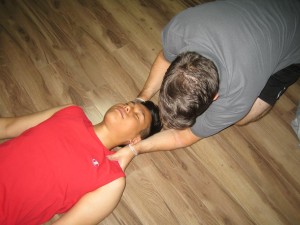Traumatic brain injury occurs from an abrupt, forceful blow to the head that leads to damage to the brain.
Once the brain collides within the skull, it results to bruising of the brain, tearing of the nerve fibers as well as bleeding. In case the skull breaks, a segment of the skull might penetrate the brain tissue.
What are the signs?
The indications of traumatic brain injury might manifest right away, within 24 hours or delayed for days or weeks after the injury.
Oftentimes, the signs are subtle. The individual might notice an issue but will not relate it to the injury. Some will have no symptoms, but the condition worsens over time.

Remember that the effects include both physical and psychological.
The initial physical effects include bruising and swelling. The elevated pressure in the brain can lead to damage to the brain tissue and increased pressure on the blood vessels.
Internal bleeding
The indications of internal bleeding include bruising behind the ears or around the eyes. The other signs that indicate severe injury include:
- Seizures or convulsions
- Loss of consciousness
- Dilated pupils
- Slurred speech
- Intense headache
- Unable to wake up from sleep
- Weakness or numbness in the legs, arms, feet or hands
Management of traumatic brain injury
For a mild case of traumatic brain injury, the signs might settle without requiring treatment. Nevertheless, for mild repeated injuries, it can be deadly.
In severe cases, hospitalization is required possibly in an intensive care unit. The emergency treatment is aimed on stabilizing the condition of the individual as well as preventing the damage in the brain from worsening. This involves keeping the airway open, providing ventilation and oxygen as well as maintaining the blood pressure.
More Information / Disclaimer
The information posted on this page on a traumatic brain injury is for learning purposes only. Learn to recognize the signs and how it is treated by taking a standard first aid course with Saskatoon First Aid.
